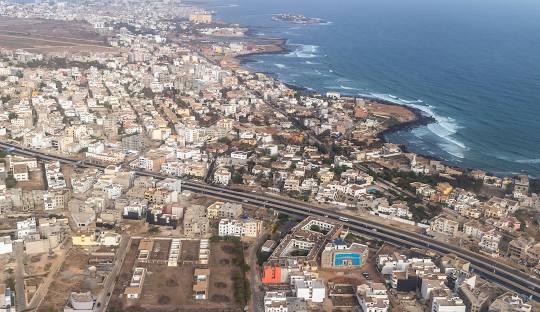Dakar, Senegal
🕌 Dakar, Senegal – West Africa's Vibrant Cultural Capital by the Sea
Overview:
Perched on the tip of the Cap-Vert Peninsula, Dakar is Senegal’s pulsating capital, a blend of vibrant street life, ocean views, colonial heritage, and soulful rhythms. It’s a city that never stands still—alive with color, music, history, and deep-rooted traditions. From bustling markets to poignant historical sites and laid-back beaches, Dakar offers an immersive taste of West African vitality.
🌟 Top Attractions and Experiences
-
Gorée Island (Île de Gorée): A UNESCO World Heritage Site and former slave trade hub. Visit the haunting House of Slaves (Maison des Esclaves) and wander pastel-colored colonial streets.
-
African Renaissance Monument: Towering at 49 meters, this bronze statue is the tallest in Africa and offers sweeping views from its summit.
-
Lac Rose (Lake Retba): Known for its surreal pink hue due to salt-loving algae, it's best seen during the dry season.
-
Dakar’s Beaches: Relax on Plage de N’Gor or Yoff Beach—ideal for surfing, sunsets, and seafood.
-
Village des Arts: Dakar's thriving contemporary arts hub where local artists live, create, and exhibit.
-
IFAN Museum of African Arts: One of the oldest art museums in West Africa with an impressive collection of masks, textiles, and artifacts.
-
Kermel and Sandaga Markets: Dive into the buzzing heart of Dakar’s commerce with crafts, fabrics, produce, and local flavor.
🏨 Where to Stay
-
Terrou-Bi Hotel (Luxury): Oceanfront luxury with a private beach, casino, and fine dining.
-
La Résidence Dakar (Mid-Range): A chic boutique hotel in the Almadies district, close to nightlife and the sea.
-
ViaVia Dakar (Budget): Friendly, artsy, and great for solo travelers.
🍽️ What to Eat in Dakar
-
Thieboudienne: Senegal’s national dish—spiced rice with marinated fish and vegetables.
-
Yassa Poulet: Chicken marinated in onions, lemon, and mustard sauce.
-
Mafé: Rich peanut stew with meat or vegetables.
-
Bissap: Hibiscus flower juice—refreshing and vibrant in color.
-
Café Touba: Spiced coffee often infused with Guinea pepper and cloves.
Tip: Visit Le Lagon 1 for seafood with an ocean view, or Chez Loutcha for authentic local cuisine.
📅 Best Time to Visit
-
November to May: The dry season offers the best weather—sunny, breezy, and pleasant for exploring.
-
June to October: Wet season with high humidity, though cultural events continue year-round.
🚖 Getting Around
-
Taxis: Negotiate fares beforehand—yellow taxis are plentiful.
-
Car Rapide: Vibrantly painted minibuses for a local (and bumpy) experience.
-
Walking: Great for exploring downtown, Gorée Island, and markets.
🎭 Culture & Music
Dakar is the heartbeat of Senegalese music, fashion, and literature. Enjoy live mbalax (a high-energy Senegalese rhythm popularized by Youssou N’Dour), local fashion boutiques, and regular art festivals like Dak’Art, Africa’s largest contemporary art biennale.
📸 Best Photo Spots
-
The cliffside views from Mamelles Lighthouse
-
The African Renaissance Monument at sunrise
-
The colorful walls of Gorée Island
-
The pink shimmer of Lac Rose
-
The buzz of Sandaga Market
💡 Travel Tips
-
Currency: West African CFA franc (XOF)
-
Language: French is the official language, but Wolof is widely spoken
-
Dress: Modest dress is appreciated in public places; bring lightweight clothes for heat
-
Safety: Dakar is generally safe, but be aware of pickpockets in crowded areas


